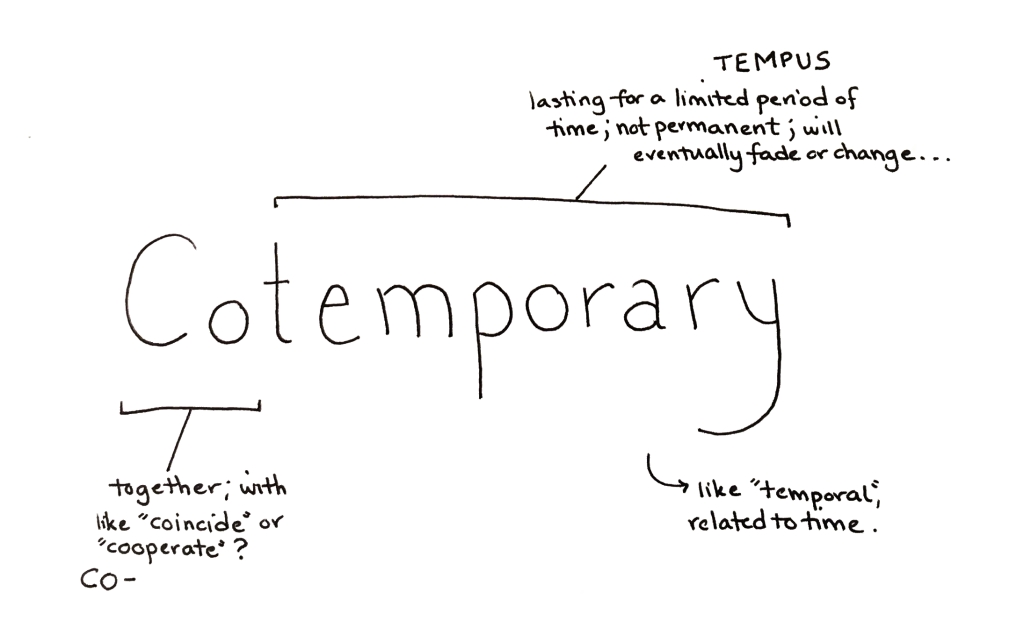In the introduction to What Was Contemporary Art?, Richard Meyer points out that “Contemporary Art,” as we usually define it, is tied to the idea of being new or recently made. As an art historical time period, it usually refers to a rough swath of time from the late 20th century to the present. However, Meyer points to a second, more essential meaning in the Oxford English Dictionary: “Belonging to the same time, age, or period; living, existing, or occurring together in time.” For Meyer, this “conveys coexistence rather than newness… it takes two, in other words, to be contemporary.”
To support his argument, Meyer introduces the term ‘co-temporary,’ an archaic form of the word ‘contemporary.’ As a linguist and logophile, I fell in love with the word ‘co-temporary’ and how elegantly it breaks into two interconnected parts, one meaning “together” and one meaning “in time”:

Time feels especially unstable right now. It speeds ahead and looks back over its shoulder and takes a tentative step toward the future and then stretches into a repeating string of days. I don’t know what to do about it. Many people probably feel that way. But something that continues to be completely and reassuringly true is that for whatever this moment in time is, we are in it together. We are here now. Co-temporary. Together in time. It’s a fancy word for a simple idea that I hope to share and celebrate through this little publication.
Interested in subscribing to the zine?
Interested in submitting something to the zine?
